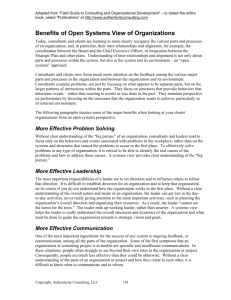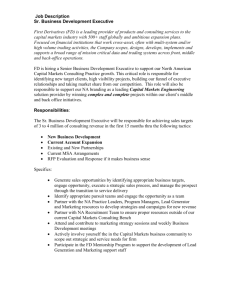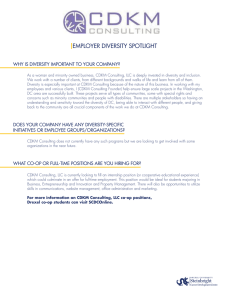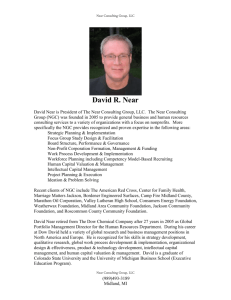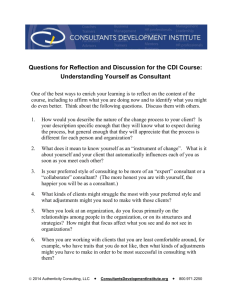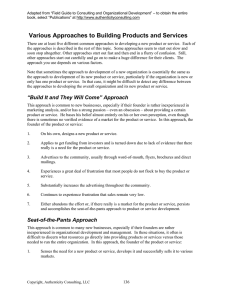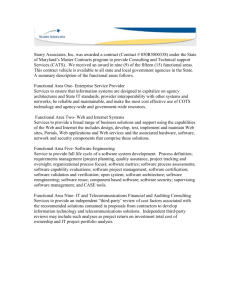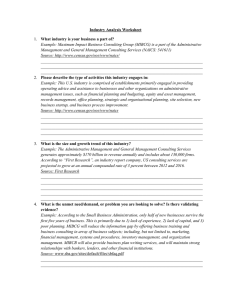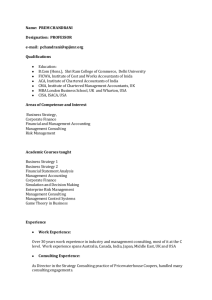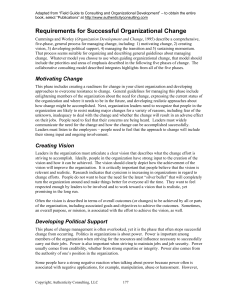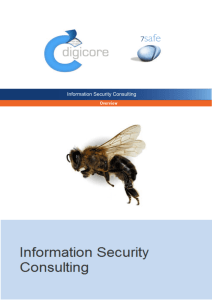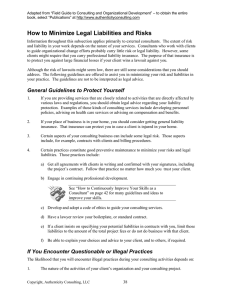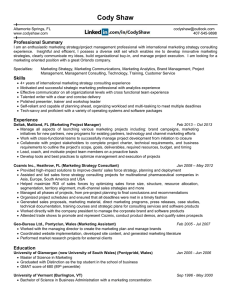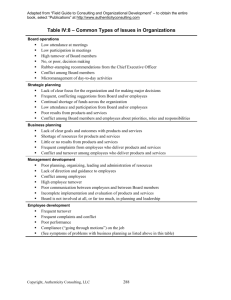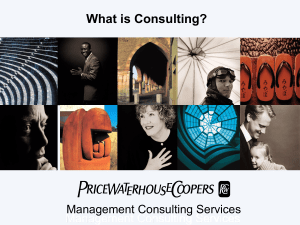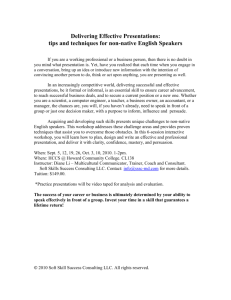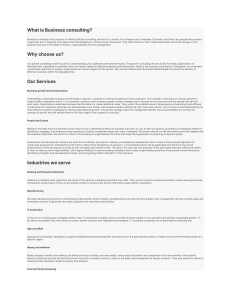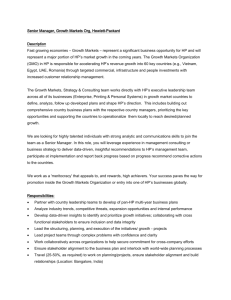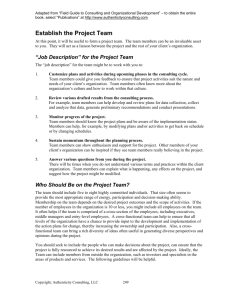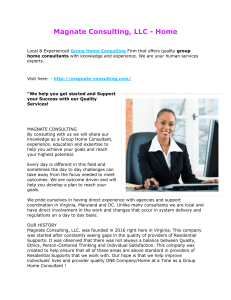Context-Sensitive Features – What Makes Each Organization Unique
advertisement
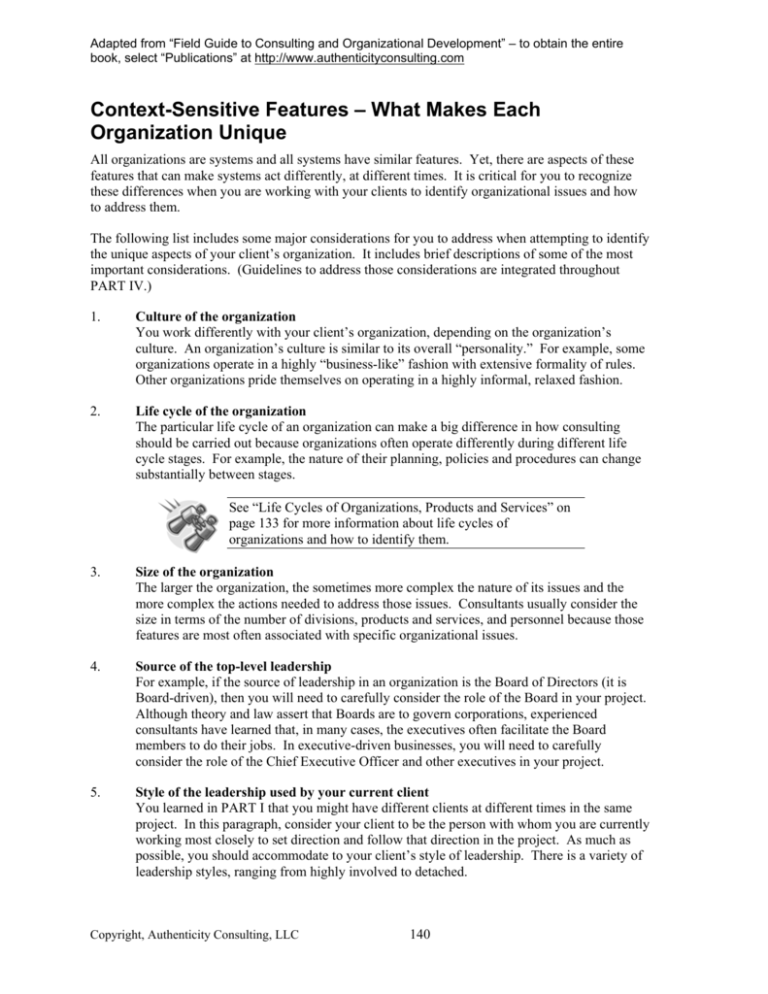
Adapted from “Field Guide to Consulting and Organizational Development” – to obtain the entire book, select “Publications” at http://www.authenticityconsulting.com Context-Sensitive Features – What Makes Each Organization Unique All organizations are systems and all systems have similar features. Yet, there are aspects of these features that can make systems act differently, at different times. It is critical for you to recognize these differences when you are working with your clients to identify organizational issues and how to address them. The following list includes some major considerations for you to address when attempting to identify the unique aspects of your client’s organization. It includes brief descriptions of some of the most important considerations. (Guidelines to address those considerations are integrated throughout PART IV.) 1. Culture of the organization You work differently with your client’s organization, depending on the organization’s culture. An organization’s culture is similar to its overall “personality.” For example, some organizations operate in a highly “business-like” fashion with extensive formality of rules. Other organizations pride themselves on operating in a highly informal, relaxed fashion. 2. Life cycle of the organization The particular life cycle of an organization can make a big difference in how consulting should be carried out because organizations often operate differently during different life cycle stages. For example, the nature of their planning, policies and procedures can change substantially between stages. See “Life Cycles of Organizations, Products and Services” on page 133 for more information about life cycles of organizations and how to identify them. 3. Size of the organization The larger the organization, the sometimes more complex the nature of its issues and the more complex the actions needed to address those issues. Consultants usually consider the size in terms of the number of divisions, products and services, and personnel because those features are most often associated with specific organizational issues. 4. Source of the top-level leadership For example, if the source of leadership in an organization is the Board of Directors (it is Board-driven), then you will need to carefully consider the role of the Board in your project. Although theory and law assert that Boards are to govern corporations, experienced consultants have learned that, in many cases, the executives often facilitate the Board members to do their jobs. In executive-driven businesses, you will need to carefully consider the role of the Chief Executive Officer and other executives in your project. 5. Style of the leadership used by your current client You learned in PART I that you might have different clients at different times in the same project. In this paragraph, consider your client to be the person with whom you are currently working most closely to set direction and follow that direction in the project. As much as possible, you should accommodate to your client’s style of leadership. There is a variety of leadership styles, ranging from highly involved to detached. Copyright, Authenticity Consulting, LLC 140 Adapted from “Field Guide to Consulting and Organizational Development” – to obtain the entire book, select “Publications” at http://www.authenticityconsulting.com 6. Structure and strategies of the organization In this context, strategies refer to the overall approaches used by the organization to effectively meet the needs of its external environment, especially the needs of its customers and stakeholders. Those approaches include how the organization identifies the environment’s needs and then uses its resources (for example, products, services, people and facilities) to meet those needs. The structures are the result of the organization’s overall strategies (the principle that “form follows function”). Structures include organizational design, policies, plans, procedures and roles. 7. Rate of change in the external environment Certain types of organizations are in the midst of tremendous change, for example, technologies, health care ad transportation. Often, the faster the rate of change in the external environment, the more that your projects will need to focus on helping your clients to recognize and guide change in their organizations, as well. Copyright; Authenticity Consulting, LLC 141
